![]() Non-transparent paint is applied to the backside of a glass pane in back-to-front order for glass painting. Since the Middle Ages we know figurative representations behind glass as decoration for altars and reliquaries. In the surrounding area of the South German and Bohemian glass factories simple handicraft paint shops developed and gradually produced more and more folk art. In those days where candles and pinewood drips sooted the walls glass paintings could quickly be cleaned and brought back to their original bright shining. The painter always sat in front of the inclined glass pane and led the brush on the back of the glass, first in thin outlines which were then filled in with paint. Towards the end of the 19th century the interest for this fragile method vanished even if occasionally one or the other artist, such as Kandinsky, felt inspired by glass as base material for painting, just as was Esteban Fekete one day.
Non-transparent paint is applied to the backside of a glass pane in back-to-front order for glass painting. Since the Middle Ages we know figurative representations behind glass as decoration for altars and reliquaries. In the surrounding area of the South German and Bohemian glass factories simple handicraft paint shops developed and gradually produced more and more folk art. In those days where candles and pinewood drips sooted the walls glass paintings could quickly be cleaned and brought back to their original bright shining. The painter always sat in front of the inclined glass pane and led the brush on the back of the glass, first in thin outlines which were then filled in with paint. Towards the end of the 19th century the interest for this fragile method vanished even if occasionally one or the other artist, such as Kandinsky, felt inspired by glass as base material for painting, just as was Esteban Fekete one day.
The second step is choosing the format, i.e. the size of the glass pane. According to its measurement he makes a drawing of the study (Fig.2) on which he puts a glass pane of the same size. Sometimes he also uses organic glass „Perspex“ which is more useful for larger sizes because of its lower weight.
On the motives of the underlying drawing that shows through, Fekete works the first sweeps with his brush, not slavishly tracing, but with verve; after turning the glass pane, these first paint applications will appear mirror-image in the foreground. The more the painting process progresses, the more the model disappears.
The last brushstrokes are on the very top and finally covered with an overall dark paint to close the background. After the paint has dried, the glass pane is turned around and only then the artist can appraise his composition.
Great imagination is demanded by this reverse painting procedure and in order to demonstrate it, Fekete divided his third step of the artistic process into three parts using three glass panes of the same size: The first one (turned around) shows the beginning of the painting (Fig.3). On the second glass pane he repeats the beginning and adds another third of the composition (Fig.4). The third glass pane gets the complete painting process, it shows the finished glass painting after it is turned over (Fig. 5) and It allows the comparison: the small study in oil turned into a brilliant blaze of colors behind glas.

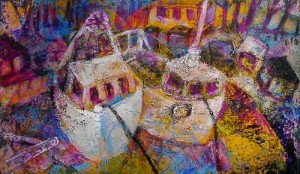
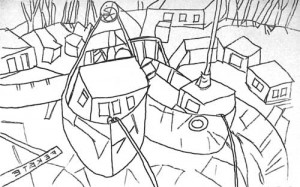
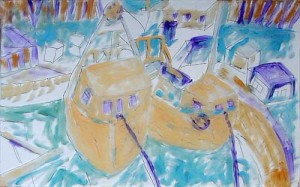
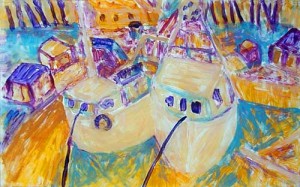
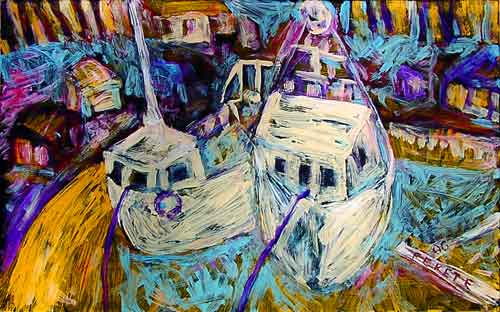

 In the list of languages, click the Translationbar and choose the entry according to your language:
In the list of languages, click the Translationbar and choose the entry according to your language: